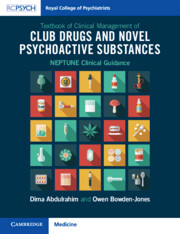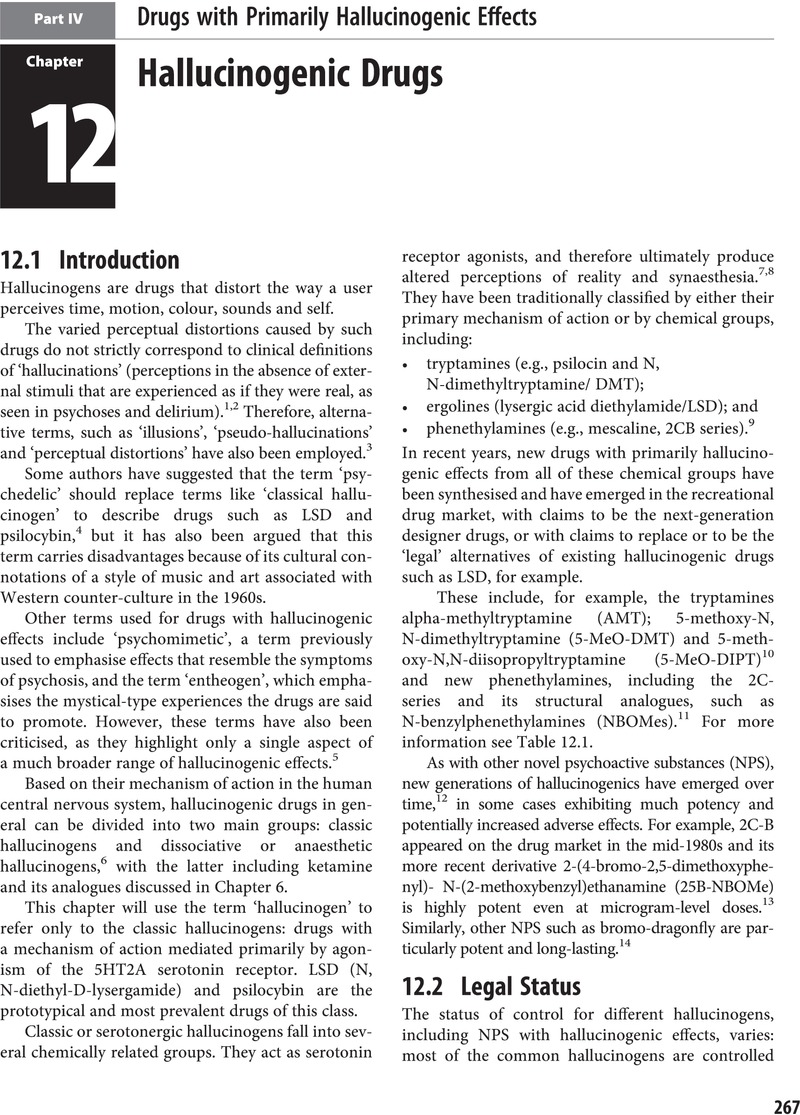 Textbook of Clinical Management of Club Drugs and Novel Psychoactive Substances
Textbook of Clinical Management of Club Drugs and Novel Psychoactive Substances Book contents
- Textbook of Clinical Management of Club Drugs and Novel Psychoactive Substances
- Textbook of Clinical Management of Club Drugs and Novel Psychoactive Substances
- Copyright page
- Contents
- Acknowledgements
- Part I Introduction and Background
- Part II Drugs with Primarily Depressant Effects
- Part III Drugs with Primarily Stimulant Effects
- Part IV Drugs with Primarily Hallucinogenic Effects
- Part V Synthetic Cannabinoid Receptor Agonists
- Part VI Concluding Remarks
- Index
- References
Part IV - Drugs with Primarily Hallucinogenic Effects
Published online by Cambridge University Press: 06 October 2022
- Textbook of Clinical Management of Club Drugs and Novel Psychoactive Substances
- Textbook of Clinical Management of Club Drugs and Novel Psychoactive Substances
- Copyright page
- Contents
- Acknowledgements
- Part I Introduction and Background
- Part II Drugs with Primarily Depressant Effects
- Part III Drugs with Primarily Stimulant Effects
- Part IV Drugs with Primarily Hallucinogenic Effects
- Part V Synthetic Cannabinoid Receptor Agonists
- Part VI Concluding Remarks
- Index
- References
Summary

- Type
- Chapter
- Information
- Textbook of Clinical Management of Club Drugs and Novel Psychoactive SubstancesNEPTUNE Clinical Guidance, pp. 267 - 298Publisher: Cambridge University PressPrint publication year: 2022


